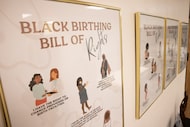Nearly thirty years ago, Marsha Johnson first started seeing patients with extreme noise sensitivities. The patients, often children or teens, were overcome by uncontrollable emotion when they heard the sounds of eating, for example, or a pencil tapping in class.
The patients had often been diagnosed with anxiety disorders or obsessive compulsive disorder or ADHD, Johnson said. Their sound sensitivities were lumped in with hyperacusis, a condition in which sounds seem much louder than they are.
But Johnson, an audiologist in Oregon, thought there was something else going on. Now, there are providers and patients around the world who agree.
Johnson was among the first clinicians to recognize the condition now referred to as misophonia. The illness is characterized by extreme sensitivity to repetitive environmental stimuli that others do not find offensive or do not even notice. Often, as the name indicates, it’s a sensitivity to noise. But Johnson said it can also be a sensitivity to certain sights or textures.
Business Briefing
Among the most common triggers, Johnson said, is the sound of regular eating.
Both Johnson and Paula Land, an audiologist in Irving, emphasized that misophonia is characterized by an aversion to soft or commonplace sounds.
“We all have sensitivity to some sounds. No one wants Darth Vader breathing in their ear,” Land said. Misophonia is “taken to the extreme. Instead of Darth Vader, it can be the way dad breathes, it can be the way everyone eats.”
A key characteristic of the condition is the strength of the reaction elicited by the trigger sounds.
Those triggers cause “a tsunami response” in the patient, Johnson said. “It’s a flooding of their system with hormones related to stress, like adrenal and cortisol, that cause us to feel very strong emotions.”
Johnson said that many patients feel rage or anger, but she’s also seen patients express a desire to self-harm or to flee from the sound.
Misophonia is not currently an officially recognized condition, Johnson said, instead caught in limbo as an “orphan disease.” Johnson and other advocates are working to change that, including through the organization that Johnson founded, the Misophonia Association.
The condition has been portrayed in some recent media, including the 2022 film Tár. The film’s title character — the conductor Lydia Tár, played by Cate Blanchett — has misophonia.
The condition is relatively rare, Johnson said, and doesn’t seem to co-occur with any particular other diagnoses. It typically manifests between eight and 13 years of age, she said, and it’s more common in girls than boys.
There aren’t many treatments for the condition, although Land said she’s seen patients find relief with background sound such as white noise or music. Johnson also said patients may benefit from psychological interventions that help them develop coping strategies.
In the meantime, the association is also raising awareness about the condition and aiming to bring together folks who are impacted.
This year’s annual Misophonia Association convention will be held in Dallas from Thursday to Saturday. Jaci Hoffman, a spokesperson for the association, said they’re expecting about 70 attendees.
 South Dallas clinic plans to build the neighborhood’s only birthing center
South Dallas clinic plans to build the neighborhood’s only birthing center
When a Fort Worth native founded the Abide clinic, she hoped it could help reduce Black maternal mortality rates.
 Texas is guinea pig in test of how ‘prior approvals’ will work in Medicare
Texas is guinea pig in test of how ‘prior approvals’ will work in Medicare
Texans on Medicare will have an extra hurdle they must overcome for certain medical procedures.

